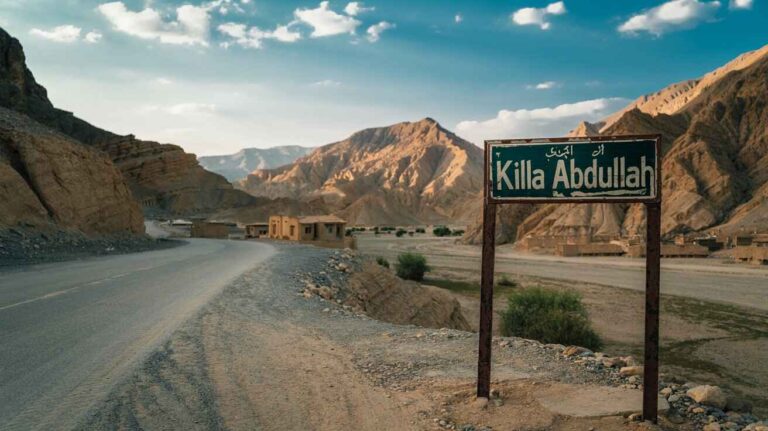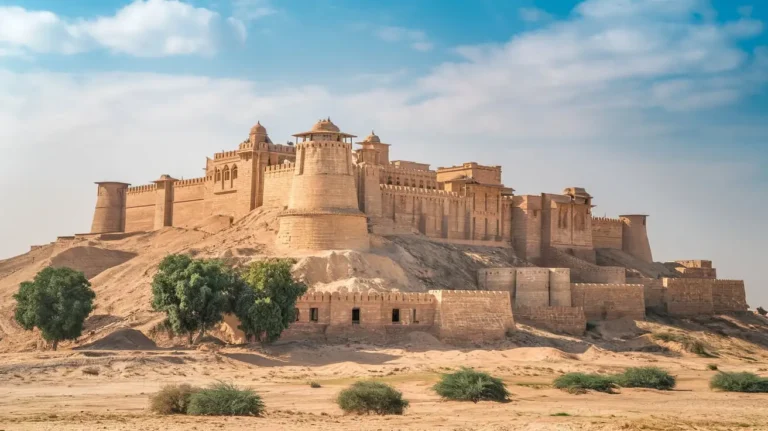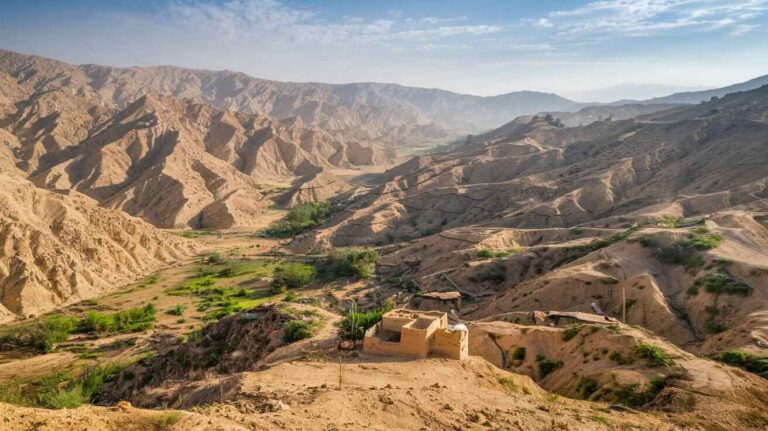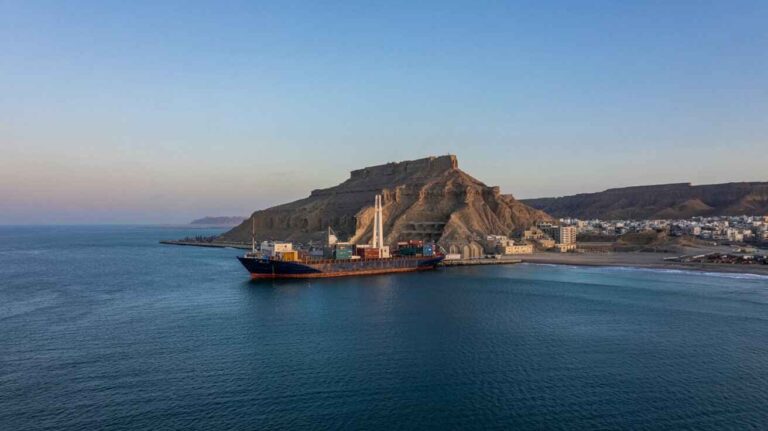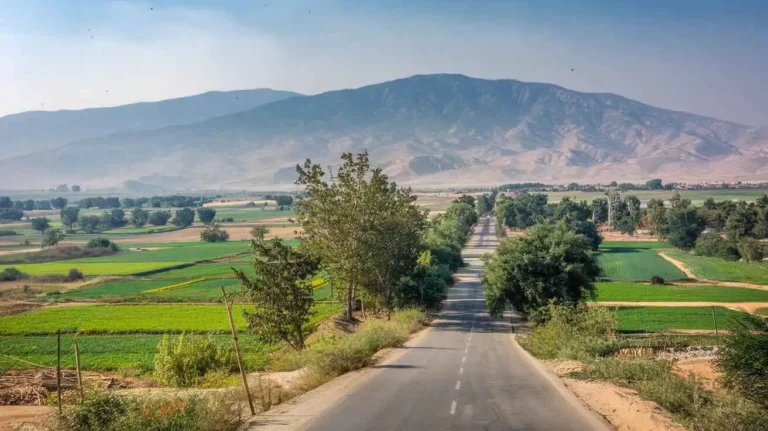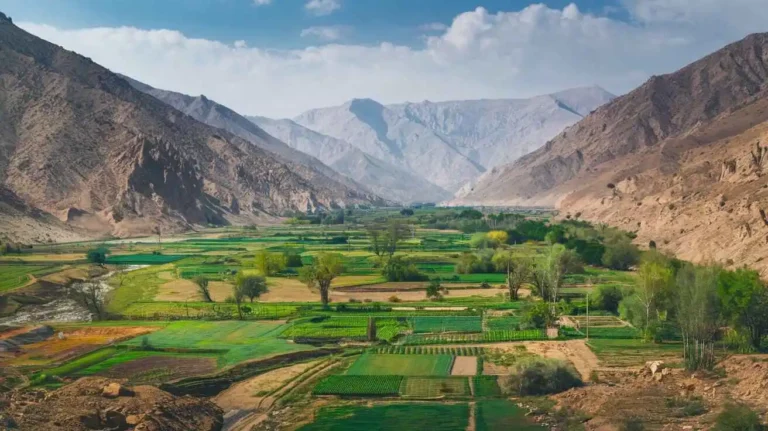Inside the Balochistan Assembly
Inside the Balochistan Assembly: Structure, Sessions, and Role in Governance
Balochistan Assembly
The Provincial Assembly of Balochistan is a unicameral body, which means it has only one chamber. Located in Quetta, the capital of the Pakistani province, it plays a key role in making laws and addressing public issues. Under Article 106 of the Constitution of Pakistan, the Assembly consists of 65 seats in total—51 general, 11 for women, and 3 for non-Muslims. These Members are elected by the people, with representatives chosen directly from their constituencies, which are spread across every district of the province.
As someone who has followed provincial politics closely, I’ve seen how these elected officials bring regional matters to light. The Balochistan Assembly gives voice to local concerns and represents the unique needs of this vast and diverse province. It’s where key decisions are made that impact everything from education to development, and it stands as a symbol of democratic representation for the people of Balochistan.
Brief History
The Provincial Assembly of Balochistan was created after the dissolution of the One Unit system through a Presidential Order issued on 30th March, 1970, making Balochistan a separate province of Pakistan. The first election to this House took place on 17th December, with 21 members: 20 general seats and one reserved for women. The Assembly’s first session was held on 2nd May, 1972 in the Historic Shahi Jirga Hall of the Town Hall, Quetta, which marked the beginning of formal provincial governance.
During that time, Molvi Shams-ud-Din served as the Speaker, and Muhammad Khan Barozai was chosen as the Deputy Speaker. Sardar Attaullah Mengal became the first Leader of the House, while Ghous Bakhsh Raisani led the Opposition. Since then, the Assembly has gone through Eleven (11) General Elections, and the present membership stands at 65, with a ratio of 51 general, 11 women, and 3 minority seats. These changes reflect a gradual strengthening of democratic values and local leadership in Balochistan.
The foundation of the Assembly building was laid in 1973, and it was formally inaugurated by the then Governor Nawab Akbar Bugti on 28th April, 1987. Later, Prime Minister Junejo visited the Assembly, which covers a total area of 12 acres. Its seating capacity includes 72 members, 25 guest government officials, and an official gallery for Visitors, along with space for 168 public attendees, 55 Press, and electronic media personnel. Over the years, this structure has become a symbol of legislative progress and public representation in Balochistan.
The role of the Provincial Assembly of Balochistan
The Provincial Assembly of Balochistan plays a key role in reflecting the will of the people of the province. As the elected house of the masses, it is responsible to make laws, amend existing ones, and take decisions that ensure the welfare and well-being of citizens. Every fiscal year, it has the authority to approve the budget, discuss proposed taxes, and hold the government to account by raising and debating key issues concerning the country—both in general and in particular contexts.
After the 18th Amendment, the Assembly was further empowered to legislate on a wide range of matters, especially those not listed under the Federal Legislative List
List of speakers
| Name of Speaker | Entered Office | Left Office | Political Party |
| Nawab Muhammad Khan Barozai | 02-05-1972 | 06-12-1976 | NAP |
| Al-Haj Mir Jam Ghulam Qadir Khan | 06-12-1976 | 05-07-1977 | NAP |
| Muhammad Sarwar Khan Kakar | 06-04-1985 | 02-12-1988 | IND |
| Nawab Muhammad Khan Barozai | 02-12-1988 | 04-02-1989 | PPP |
| Mehr Muhammad Akram Baloch | 05-02-1989 | 24-04-1990 | BNA |
| Mir Zahoor Hussain Khan Khosa | 31-05-1990 | 17-11-1990 | BNA |
| Malik Sikandar Khan | 17-11-1990 | 19-10-1993 | JUI-F |
| Abdul Waheed Baloch | 19-10-1993 | 21-02-1997 | BNM |
| Mir Abdul Jabbar Khan | 21-02-1997 | 12-10-1999 | JWP |
| Jamal Shah Kakar | 29-11-2002 | 08-04-2008 | MMA |
| Aslam Bhutani | 08-04-2008 | 26-12-2012 | PML |
| Syed Matiullah Agha | 31-12-2012 | 04-06-2013 | MMA |
| Jan Mohammad Jamali | 04-06-2013 | 22-05-2015 | PMLN |
| Rahila Durrani | 24-12-2015 | 16-08-2018 | PMLN |
| Abdul Quddus Bizenjo | 16-08-2018 | 25-10-2021 | BAP |
| Jan Mohammad Jamali | 30-10-2021 | 28-02-2024 | BAP |
| Abdul Khaliq Khan Achakzai | 29-02-2024 | present | PMLN |
List of Assemblies of Balochistan
| No. | Name | Term start | Term end |
| 1 | 1st Provincial Assembly of the Balochistan | 1972 | 1976 |
| 2 | 2nd Provincial Assembly of the Balochistan | 1976 | 1977 |
| 3 | 3rd Provincial Assembly of the Balochistan | 1985 | 1988 |
| 4 | 4th Provincial Assembly of the Balochistan | 1988 | 1990 |
| 5 | 5th Provincial Assembly of the Balochistan | 1990 | 1993 |
| 6 | 6th Provincial Assembly of the Balochistan | 1993 | 1996 |
| 7 | 7th Provincial Assembly of the Balochistan | 1997 | 1999 |
| 8 | 8th Provincial Assembly of the Balochistan | 2002 | 2007 |
| 9 | 9th Provincial Assembly of the Balochistan | 2008 | 2013 |
| 10 | 10th Provincial Assembly of the Balochistan | 2013 | 2018 |
| 11 | 11th Provincial Assembly of the Balochistan | 2018 | 2023 |
| 12 | 12th Provincial Assembly of the Balochistan | 2024 | present |
Members of the 12th Provincial Assembly of Balochistan
The List of Members of the 12th Provincial Assembly of Balochistan presents a comprehensive record of the newly elected representatives who now constitute the legislative body of the province. Their first meeting was convened on 28 February 2024 in Quetta, where all newly chosen MPAs took oath in an official sworn ceremony. These members represent a wide political spectrum and mark a new phase in the democratic journey of Balochistan.
The current assembly includes lawmakers from multiple political parties, reflecting a diverse political landscape. Among these are members from Pakistan People’s Party (PPP), Pakistan Muslim League (PMLN), Jamiat Ulema-e-Islam (F), and the Balochistan Awami Party (BAP). This blend of representation shows the pluralistic spirit of the province’s politics and strengthens the democratic fabric at the provincial level.
Elected members
| Constituency | Member | Note | Ref | |||
| No. | Name | Party | Name of Member | |||
| PB-1 | Sherani-Cum-Zhob | JUI(F) | Nawaz Kibzai | |||
| PB-2 | Zhob | JUI(F) | Fazal Qadir Mandokhail | |||
| PB-3 | Killa Saifullah | PPP | Maulana Noorullah | |||
| PB-4 | Musakhel-cum-Barkhan | PML(N) | Abdul Rehman Khetran | |||
| PB-5 | Loralai | PML(N) | Muhammad Khan Toor Utmankhel | |||
| PB-6 | Duki | PML(N) | Sardar Masood Ali Khan Luni | |||
| PB-7 | Ziarat cum Harnai | PML(N) | Noor Muhammad Dummar | |||
| PB-8 | Sibi | PPP | Mir Kohyar Khan Domki | |||
| PB-9 | Kohlu | PML(N) | Changez Khan Marri | |||
| PB-10 | Dera Bugti | PPP | Sarfraz Bugti | |||
| PB-11 | Jhal Magsi | BAP | Nawabzada Tariq Magsi | |||
| PB-12 | Kachhi | PML(N) | Mir Mohammad Asim Kurd Gello | |||
| PB-13 | Nasirabad-I | PPP | Mir Muhammad Sadiq Umrani | |||
| PB-14 | Nasirabad-II | PML(N) | Muhammad Khan Lehri | |||
| PB-15 | Sohbatpur | PML(N) | Mir Saleem Ahmed Khoso | |||
| PB-16 | Jafarabad | JI | Abdul Majeed Badini | |||
| PB-17 | Usta Muhammad | PPP | Faisal Khan Jamali | |||
| PB-18 | Khuzdar-I | PPP | Sanaullah Khan Zehri | |||
| PB-19 | Khuzdar-II | JUI(F) | Mir Younus Aziz Zehri | |||
| PB-20 | Khuzdar-III | BNP(M) | Mir Jahanzaib Mengal | |||
| PB-21 | Hub | BAP | Mohammad Saleh Bhootani | |||
| PB-22 | Lasbela | PML(N) | Nawabzada Mir Muhammad Zarain Khan Magsi | |||
| PB-23 | Awaran | NP | Khair Jan Baloch | |||
| PB-24 | Gwadar | HDT | Hidayat ur Rehman Baloch | |||
| PB-25 | Kech-I | PPP | Zahoor Ahmed Buledi | |||
| PB-26 | Kech-II | NP | Abdul Malik Baloch | |||
| PB-27 | Kech-III | PML(N) | Barkat Ali Rind | |||
| PB-28 | Kech-IV | PPP | Mir Asghar Rind | |||
| PB-29 | Panjgur-I | BNP(A) | Mir Asadullah Baloch | |||
| PB-30 | Panjgur-II | NP | Rahmat Saleh Baloch | |||
| PB-31 | Washuk | JUI(F) | Mir Zabid Ali Reki | |||
| PB-32 | Chagai | BAP | Sadiq Sanjrani | |||
| PB-33 | Kharan | PML(N) | Mir Shoaib Nosherwani | |||
| PB-34 | Nushki | JUI(F) | Haji Ghulam Dastagir Badeni | |||
| PB-35 | Surab | JUI(F) | Mir Zafarullah Khan Zehri | |||
| PB-36 | Kalat | BAP | Mir Ziaullah Langau | |||
| PB-37 | Mastung | JUI(F) | Aslam Raisani | |||
| PB-38 | Quetta-I | ANP | Malik Naeem Khan Bazai | |||
| PB-39 | Quetta-II | PML(N) | Bakht Muhammad Kakar | |||
| PB-40 | Quetta-III | PPP | Samad Khan Gorgage | |||
| PB-41 | Quetta-IV | PML(N) | Wali Muhammad Noorzai | |||
| PB-42 | Quetta-V | PML(N) | Sheikh Zarak Khan Mandokhail | |||
| PB-43 | Quetta-VI | PPP | Mir Liaquat Ali Lehri | |||
| PB-44 | Quetta-VII | PPP | Mir Ubaidullah Gorgage | |||
| PB-45 | Quetta-VIII | PPP | Ali Madad Jattak | |||
| PB-46 | Quetta-IX | BAP | Prince Ahmed Umer Ahmedzai | |||
| PB-47 | Pishin-I | PPP | Asfand Yar Khan Kakar | |||
| PB-48 | Pishin-II | JUI(F) | Asghar Ali Tareen | |||
| PB-49 | Pishin-II | JUI(F) | Syed Zafar Ali Agha | |||
| PB-50 | Killa Abdullah | ANP | Zmarak Khan Achakzai | |||
| PB-51 | Chaman | PML(N) | Abdul Khaliq Khan Achakzai | |||
| Reserved | Women | PPP | Ghazala Gola | |||
| PPP | Meena Majeed | |||||
| PPP | Shehnaz Umrani | |||||
| PML(N) | Rahila Durrani | |||||
| PML(N) | Hadiya Nawaz | |||||
| PML(N) | Rubaba Khan Buledi | |||||
| JUI(F) | Shahida Rauf | |||||
| JUI(F) | Safia Fazlur Rehman | |||||
| BAP | Farah Azeem Shah | |||||
| NP | Umm Kulsoom | |||||
| ANP | Salma Bibi | |||||
| Minorities | PPP | Sanjay Kumar | ||||
| PML(N) | Ashok Kumar | |||||
| JUI(F) | Ravi Pahuja | |||||
Infrastructure of the Balochistan Assembly
The main building of the Balochistan Assembly is designed to facilitate both official proceedings and administrative efficiency. The Hall, where sessions are conducted, has a capacity of 72 seats for the members, providing a structured space for lawmaking and debate. Attached to it is the Governor’s and Speaker’s Gallery, which can host 25 high-ranking guests and honor-holders from the Provincial Government. In the upper gallery, space has been provided for 168 distinguished individuals, including 55 representatives from the news media and officials who cover legislative developments.
A new Administration block was inaugurated in 2002, which includes working space for 40 Senior Officers and separate offices to maintain order and privacy. The building also houses a Conference Hall that can seat 61 people, making it suitable for official briefings and legislative workshops. Additionally, a Committee Room with space for 23 and a smaller chamber for 17 offers dedicated areas for internal discussions, reflecting the Assembly’s focus on effective and organized governance.
The Parliamentary IT Resource Center (PITRC)
The Parliamentary IT Resource Center (PITRC) was established to offer modern information support services to the members of the Provincial Assembly of Balochistan. This initiative ensures that elected representatives have access to essential resources that help them carry out their legislative duties more effectively. From research assistance to digital data access, the PITRC plays a key role in bridging the gap between governance and technology.
All services provided by the center are free of cost, making it easier for members
Internet Access
Photocopying
Printing Facilities
Document Scanning
FAX
Balochistan Provincial Assembly Library
A Look Inside the Legislative Library
During my visit to the Balochistan Provincial Assembly, one of the places that truly stood out was its Library. It’s not just a room with shelves but a well-organized and resourceful space. With over seven thousand books carefully arranged by subject using the DDC scheme, the collection includes works on political science, Islam, history, Law, and the constitution. What caught my attention was the balance between modern and traditional systems. The Library started its automation programme back in 1993 under LAMP, and presently, KOHA is used to maintain records, making it easier for Honorable members to find material quickly.
The Library also has an impressive collection of journals and printed resources available in both English and Urdu. From daily newspapers like Dawn, The News, Balochistan Times, Jang, Mashriq, and Express to weekly magazines such as Intikhaab, Times News Week, and Akhbar-e-Jehan, it offers a wide view of national and local perspectives. Thanks to the accession numbers system and Internet access, it was easy to locate articles and references. They even offer photocopying facilities, making it convenient to use material without damaging originals. The Library is more than a quiet space—it’s a silent but powerful support to the Assembly’s work.
First Day Proceedings of the Provincial Assembly
Walking into the First Day Proceedings of the Provincial Assembly feels like witnessing history unfold. On this day, newly elected Members from the recent general elections attend their first meeting to take the Oath. The Provincial Assembly also elects a Speaker and Deputy Speaker from amongst its members—another crucial step in forming the house. If the offices are vacant, the Assembly quickly fills them. As per the rules, the Governor of the Province has the power to call the first session, and is also authorized to postpone or discontinue it. Additionally, a written request signed by one quarter of the total membership can force a meeting to be summoned within 14 days of receipt. These formal steps mark the Assembly’s transition from election to legislation.
A lesser-known but equally vital space in the Assembly is the Media Center, specially established for journalists and media personnel to ensure smooth coverage of the Assembly proceedings. It offers high-speed internet access to send and receive emails, along with photocopying, printing, and facsimile facility—all available for the convenience of the media people. During each live video session, they work around the clock, with tea and coffee arrangements provided to keep them energized. I’ve personally observed how efficiently this Center operates; it reflects the Assembly’s commitment to transparency and keeping the public informed through the media.
Number of Sessions and Days during a Year
The Provincial Assembly operates with three sessions per year, typically lasting for about 120 days in total. The first session of each year is appointed by the Governor, who calls the meeting to order. Following this, the next session is scheduled on the date set during the last sitting. The intervening periods between sessions allow members to focus on constituency work, though it’s crucial to remember that the Assembly is bound by the term limits—five years—before it is dissolved.
In Pakistan, the Dissolution of the Provincial Assembly happens on the advice of the Chief Minister, who can recommend the dissolution to the Governor. The Governor is empowered to dissolve the Assembly if such a request is made. However, if a vote of no confidence is passed against the Chief Minister, or if a majority of Members loses confidence in the government, the Assembly may be dissolved within 48 hours. The President’s opinion may also be sought in certain cases. Following the dissolution, the first sitting of the general election is arranged, where the newly elected Members will take the oath, and the Speaker and Deputy Speaker will preside over the meeting. In this session, members also nominate a Chairman for future sessions, ensuring an impartial and fair conduct of proceedings.
Commencement of a Session
Role of the Speaker and the Dissolution Process
The Speaker plays a crucial role in the Provincial Assembly. When the Speaker is absent, they nominate Members to form a panel of four Chairmen who preside over the session in order of precedence. This ensures that the proceedings run smoothly. If the Deputy Speaker is unavailable, a Secretary informs the Assembly about the absence, and the nominated members take over. The Assembly then elects the presiding officer for the session based on a vote of confidence, ensuring that the session continues uninterrupted.
Any resolution or motion related to the Chief Minister or the vote of confidence is presented in writing. The notice is then circulated among the members, and if a statement has been consented, it is taken up during the session. If there is a holiday or non-official break, the Speaker informs the Governor about the result of the proceedings, especially if a vote of no confidence has been passed. A copy of the resolution is forwarded to the Governor within a few days. This process guarantees transparency and adherence to the rules of the Assembly.
Number of Sessions and Order of Business
The Assembly of Balochistan holds at least four sessions every year, each beginning with the recitation of the Holy Quran. The Speaker has the authority to hold or suspend a session if necessary, especially when points raised during discussion are not adequately debated or when a matter still needs to be decided. The Secretary plays a key role in arranging the government business, making sure that Bills, Resolutions, and other important issues are taken up in a structured way.
The order and priority of business, particularly the introduction of Private Bills, are determined through a ballot. Once Bills are introduced, they are taken up in the order fixed, and after the Bill is passed, a motion is carried for it to be reported by a Standing or Select Committee. The report is then presented, circulated, and public opinion is sometimes gathered before final consideration. Private resolutions that aren’t discussed in a session are again drawn, and some may be included in the subsequent ballots. Every working day, the Secretary prepares a List of Business for the Members to follow.
Legislation
The Balochistan Provincial Assembly holds the power to initiate, pass, and amend bills related to provincial matters, playing a key role in shaping law and policy. Whether it’s a Bill to improve local governance or to amend existing statutes, the Assembly debates and decides its fate. If a Bill seeks to amend the Constitution, it must be presented to the President of Pakistan for assent only after being passed by a two-thirds majority of the membership. Such Constitutional amendments require both thoughtful deliberation and overwhelming support within the house.
The Assembly also manages money bills, including the annual budget statement. These are introduced with careful planning and reviewed through open debate. A motion for passing the budget or even a vote of no-confidence against the Chief Minister can be brought forward. For such a vote to succeed, the majority of members voting must be in favor. Through this, the Provincial Assembly of Balochistan not only legislates but also holds the executive accountable, reflecting its central place in provincial governance.
Provincial Assembly Bill Process
Law-Making Process in the Balochistan Provincial Assembly
In Balochistan, every proposal for law making must reach the Provincial Assembly in the form of a Bill. These Bills can be of two kinds—those introduced by Government ministers and others by a Private Member. Once introduced, the Assembly debates whether to approve, endorse, or reject the proposal. After a Bill is sent through all required stages and gains majority support, it moves forward for assent.
During recess, if urgent legislation is needed, the Governor can issue Ordinances. These hold the same power as laws but must later be introduced in the Assembly for approval. Only when the Assembly gives its nod does the ordinance take lasting effect. This process ensures that all law making—whether routine or emergency—remains within the democratic framework of the Provincial Assembly of Balochistan.
Every Bill goes through three stages:
Lawmaking and Budget Procedures
The process of turning a Bill into Law in the Provincial Assembly of Balochistan follows clear stages. In the first reading stage, the Bill is introduced and there’s no formal general discussion—it’s more of a notification that the Member wishes to bring the Bill forward. Then in the second reading stage, the general principles of the Bill are debated, and it can even face rejection, particularly in the case of Government Bills. The third reading stage is more detailed. Here, the Bill is often sent to Standing Committees, where the Speaker, Ministers, and experts join to debate Bills, possibly recommend amendments, or even re-write them from scratch. The Standing Committee then presents its Report, including any proposed amendment, and the Bill is passed after the third reading if the House agrees. Once amendments are settled, the Bill is sent to the Governor.
The Governor has thirty days to grant assent, thereby converting the Bill into an Act. Alternatively, the Governor may withhold assent, effectively vetoing the Bill—except in the case of money Bills. The Governor may also return the Bill to Parliament for reconsideration. If returned, and the Provincial Assembly reconsiders and passes the Bill again with or without amendment by a majority of members present and voting, it must then be presented again for assent, which cannot be withheld. A Bill pending in the Provincial Assembly shall lapse upon the dissolution of the Assembly.
The Budget too is dealt with in the Assembly in defined stages. There is a general discussion on the Budget as a whole, followed by a discussion on expenditures charged to the Provincial Consolidated Fund. Then comes the discussion on demands for grants, and finally the voting on these demands. The Budget discussion must begin after at least one day of the presentation and go on for a minimum of four days. During the first session following a general election, the Assembly must elect Standing Committees for the duration of the term. These Committees, which include representatives from departments like Food, Agriculture, and Finance, play a vital role in reviewing legislative proposals. They act in accordance with the Rules of Procedure, ensuring every matter referred by the Speaker is meticulously studied, and reports and recommendations are submitted within a specified or extended period to the Assembly.
The function of Committees is primarily to
Committees are a vital part of how the Provincial Assembly of Balochistan functions. Similar to Parliament, they play a key role in holding the Government accountable for its actions. These oversight bodies are made up of elected representatives from various political parties, ensuring that every policy and law receives fair and just consideration. Their main job is to scrutinize the decisions of the government, making sure that the needs of the public are always put first.
Through their function, Committees examine the management performance of departments and review how well Ministers are handling their responsibilities. They look closely at policies and provide advice or objections when needed, often reaching the highest levels of government influence. This system not only improves transparency but also strengthens democracy by making sure that those in power are answerable to the people.
To become a Member of the Provincial Assembly, certain qualification rules must be met as per the Constitution. Those who do not meet these standards, or are involved in defection, can face disqualification. Since 1997, the privileges of members have allowed them to freely express their voice, opinions, and view in Assembly proceedings without being held accountable in any court of law for any statement made during those sessions.
In the first meeting of a newly elected Assembly, after members take the oath, they elect a Speaker and Deputy Speaker through a secret ballot, by a majority of the votes of the members present in the House. The term of office for both lasts until the Assembly is dissolved, after which they are replaced in the following session.
If the Speaker wishes to resign, the resignation must be sent to the Governor. The Deputy Speaker can also be removed from office if a resolution supported by a majority of the Assembly membership is passed in a meeting chaired by someone other than the Speaker.
The functions of the Speaker begin at the start of each session, where they nominate a panel of Chairmen in order of precedence to preside over sittings in their or the Deputy Speaker’s absence. Holding a central position, the Speaker, often a nominee of a political party, ensures the business of the house is conducted in a just, fair, and impartial manner. The Speaker must manage proceedings according to the norms of democracy, maintaining a balance between the Treasury and Opposition benches.
Their functions include administrative and financial duties as laid out in the Constitution and rules. While in the Chair, the Speaker ensures the session begins at the appointed time, maintains order, and helps conduct business smoothly. They have the authority to preserve decorum, enforce decisions, suspend or expel a member, have Galleries cleared, and a stranger removed during a secret sitting. The Speaker can allow remarks, amend notices, or rule on motions. In their absence, the Deputy Speaker or a Chairman, chosen by precedence, will preside over the session to maintain continuity.
The Chief Minister
Leadership and Confidence Procedures
After a general election, the Provincial Assembly must first elect a Speaker and Deputy Speaker before it can begin to transact business. A special session is summoned by the Governor, as specified by the President, for this purpose. The next major task of the Assembly is to elect the Chief Minister of Balochistan, who must secure a vote of confidence from the majority of the membership within 60 days of assuming office. The Cabinet, including Provincial Ministers, is then formed to assist the Chief Minister in carrying out governance.
If needed, the Assembly holds the power to remove the Chief Minister by passing a resolution of vote of no-confidence. Such a resolution must be submitted in writing to the Secretary by at least 20 per cent of the total members. If the resolution is passed, the Chief Minister is considered to have resigned. The Governor, in all matters, acts on the aid and advice of the Cabinet, and any Minister may be removed from office or submit resignation as part of the normal democratic process. These checks and balances ensure that the government remains answerable to the people and their elected representatives.
Leader of the Opposition
Role of the Opposition in the Assembly
The Opposition in the Provincial Assembly of Balochistan plays a significant role in ensuring the democratic process functions effectively. Members of the Opposition provide an alternative view to the governance led by the party in power, often highlighting flaws or suggesting improvements in the implementation of laws and policies. Their views are rooted in the principles of the Constitution, offering a crucial counterbalance that upholds the interests of the general public.
A Member of the Opposition acts as a focal point for voicing concerns and is often the presenter of opposing views during sessions. The Leader of the Opposition is selected through fixed processes as defined by the Rules of Procedure of the Assembly. This election comes with defined powers, duties, and functions, ensuring structured procedures are followed in the Assembly at all times. The role of the Opposition is vital in promoting transparency and holding the government accountable.
Voice of the People: Opposition Participation in Legislation
Those who participate in the deliberations of the Provincial Assembly—especially the opposition—offer critical opposing views on government policy in the best interests of the citizens. They feel obliged to speak based on facts and strong arguments, often pushing the government to modify its policies for greater public benefit. The Opposition becomes a public voice on a public platform, conveying the citizens’ views with clarity and responsibility.
Opposition parties don’t merely oppose for the sake of resistance; they offer an alternative program during legislative decisions, propose amendments to legislation, and serve as a counterpoint in policy debates. Their oversight role helps keep government policies transparent and responsive. Through active debate, thorough exposition, and the power to modify or redirect bills, they bring new perspectives into the Assembly, reflecting the true will of the electorate through their opposing views.


